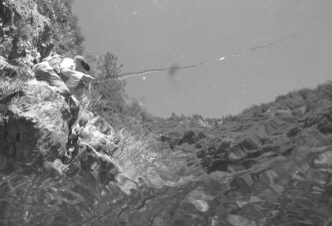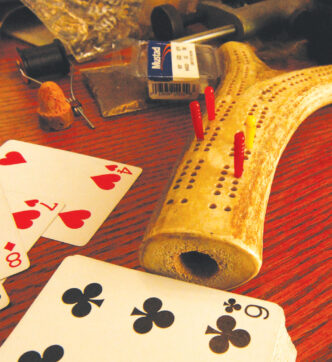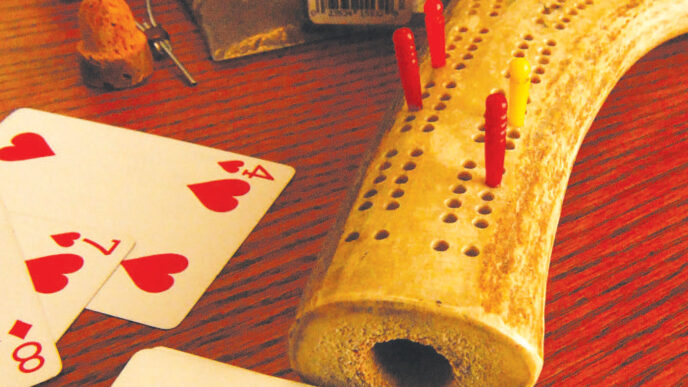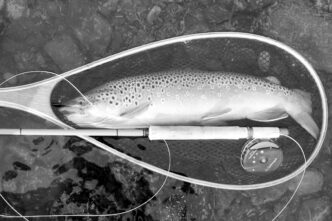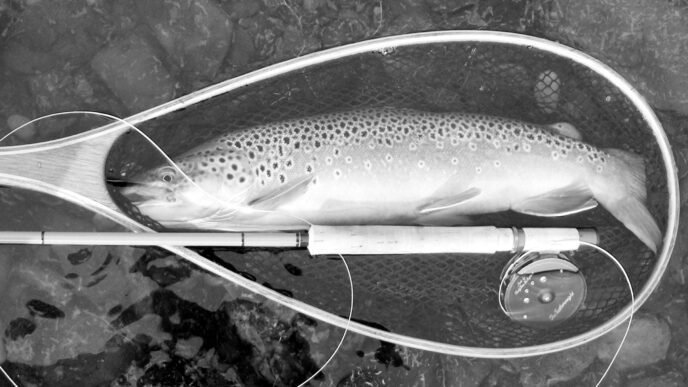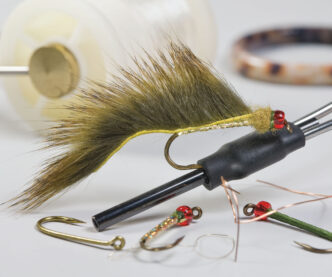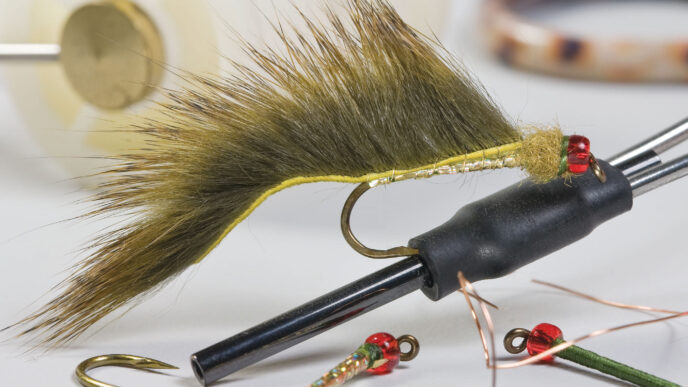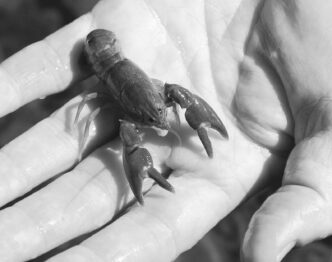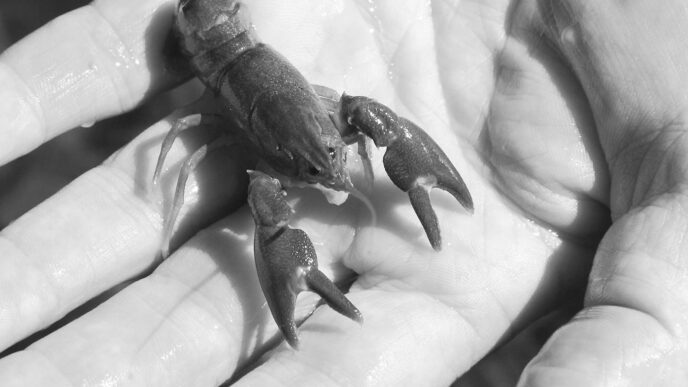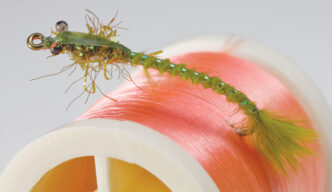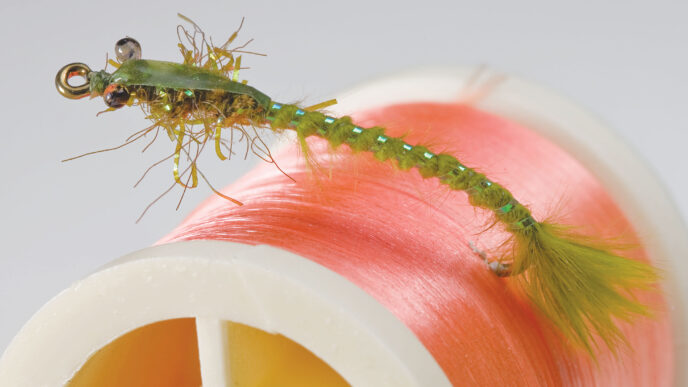A few days ago, while waiting for my tea to cool, I pulled Gary LaFontaine’s The Dry Fly: New Angles off the shelf and thumbed through it. He had sent me the book the day it came off the press, writing on the frontispiece “Ralph, you are doing fabulous work with your scuba observations. We’ll have to dive together soon.” It was his way of ensuring I would write a nice book review.
We would continue to chat and compare notes over the next decade, but his downward spiral into the clutches of ALS nixed any hope of ever making that dive. Gary’s words live on though, and his chapter “Why Anglers Fail” is no less true today than when it was written in the 1980s. It is an essay on stealth. We sometimes came to different conclusions about things we observed underwater, but we completely agreed on how trout behave when approached by humans.
It is very, very hard to sneak up on trout. They invariably know you are there, and the second you start waving a rod in the air and throwing a colored string at them, the ones who hadn’t noticed you will.
Fortunately for us, they don’t usually care. Fish are not afraid of motion, only incongruous motion. When wind is waving the trees to and fro, trout will continue to feed. If a deer saunters to the water for a drink, they will continue to feed. If you slash your rod around like a pirate with a saber, they will likely shut down.
Stay low and move slowly. If you want to catch fish, slow down and then stop! Walking softly to the river, stopping frequently to take note of everything and nothing in particular, will not only make you the accepted company of the fish, it will vastly improve your “situational awareness.” Fishing is nothing more than successfully connecting dots, and the more dots you have, the easier it is to draw a straight line to the end of a bent rod. Dots such as blackbirds picking stuff off the banks, or the subtle pale blink of a trout’s mouth opening for a nymph, or the glint of spinner wings at treetop level will appear only when you slow down and see, rather than just look.
Trout don’t like moving silhouettes or shadows thrown on the water. When approaching a fishy spot, stay in the shadows, keep a bush between you and the water, or at least keep the bushes directly behind you to diffuse your silhouette or shadow.
Upon arriving at the river bank (with rod held pointing behind you, not over the water or up in the air), look for a comfortable place to sit. Watch what’s going on. If you scared fish on your entry, they will soon return. Only now should you tie on a fly. Anglers who rig up at the truck with stuff that worked yesterday, last week, or even last year have set in motion a recipe for failure or at least delayed success. Rigging at the water doesn’t take a second longer, and it gives you an intelligence edge. In 1653, John Dennys wrote of dulling the finish and darkening the color of cane rods, lest the flash or brightness make the “wary fish withdraw.” A product line of the brightest, flashiest trout rods I have ever seen in my life was minted by a prominent fly rod company in 2011. Three hundred and fifty years after Dennys’s observation, there should be absolutely no market for rods of this kind among intelligent anglers.
Despite every hunter and angler knowing that a broken pattern blends better with natural surroundings than does a solid color, most fishing-clothing manufacturers continue to pump out solid-color shirts, many of them in bright and bold hues. You can’t blame the companies — they are driven by consumer demand. The next time you are buying a fishing shirt or hat, decide if you want to make a fashion statement or catch fish. Your purchase will motivate manufacturers in one direction or another.
Anglers generally wade far too much. The moment you set foot in the water, you have increased trout paranoia severalfold. They can see your legs perfectly well underwater (much better than they can see you above water), and when you enter their realm, you are no longer a visitor on their threshold, but a stranger in their compound.
Far more threatening to a trout than seeing you is feeling you. The pressure waves set up by your entry into and movement through the water are ominous to a fish. Fish from shore when possible. If wading is necessary, walk slowly and consciously avoid pushing water. When possible, lift a foot out of the river and slip it back in toe first rather than shuffling forward through the water.
Short-line the fish. The worst modern mindset is that casting far is good technique. Charles Cotton coined the phrase “fine and far off,” which has come to define fly fishing. Mr. Cotton fished in a time before reels were popular. “Far off ” was probably 20 feet (and fine was likely an 0X tippet). Few things will alert a fish that something is awry quicker than a mayfly dun skating across the stream. Nothing controls drag better than a nearly taut line to the fly, and nothing introduces drag more quickly than an errant line and leader stretched way out across the water. The longer the cast, the greater your loss of control and the greater your chance of spooking fish. There is a false sense of stealth that comes with a long presentation. Stalk the fish, get as close as possible, and only then make your sneaky cast.
Do not jerk line off the water. Allow your fly to drift well past the fish, and only then quietly slide it off the water. Wriggle the rod tip so the line rolls back and forth as it is breaks the surface tension on the lift. You will immediately see line spray disappear.
In his book, Gary lists the 10 commandments of stealth. In no particular order are the first 9:
- Avoid wading.
- Move slowly.
- Stop.
- Step lightly.
- Do not push water.
- Avoid reflective materials.
- Lower your profile.
- Do not rip line off the water.
- Control drag/shorten the presentation.
The tenth commandment is the hardest one to teach, but it is the one we both felt most important. It is “Relax the trout.” Be unobtrusive, move with grace, and become a tree. As Gary wrote, “A trout doesn’t ponder, he reacts — and if something isn’t worth reacting to, he doesn’t think about it for long.”
Gary passed away 10 years ago this spring. His work is timeless, and his observations and discoveries are the backbone of much of what we take for granted in 2012.



